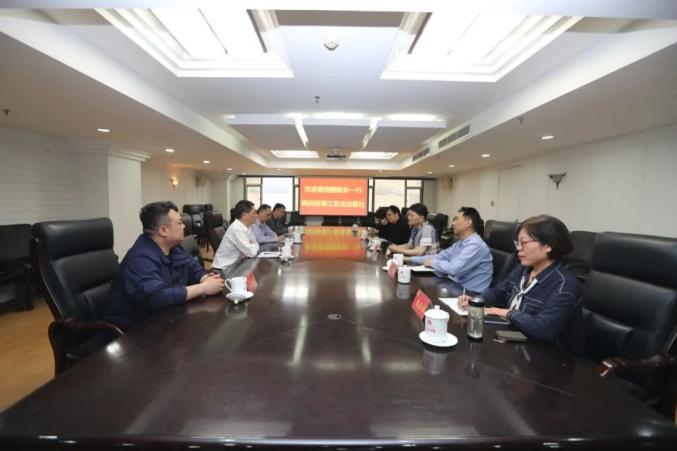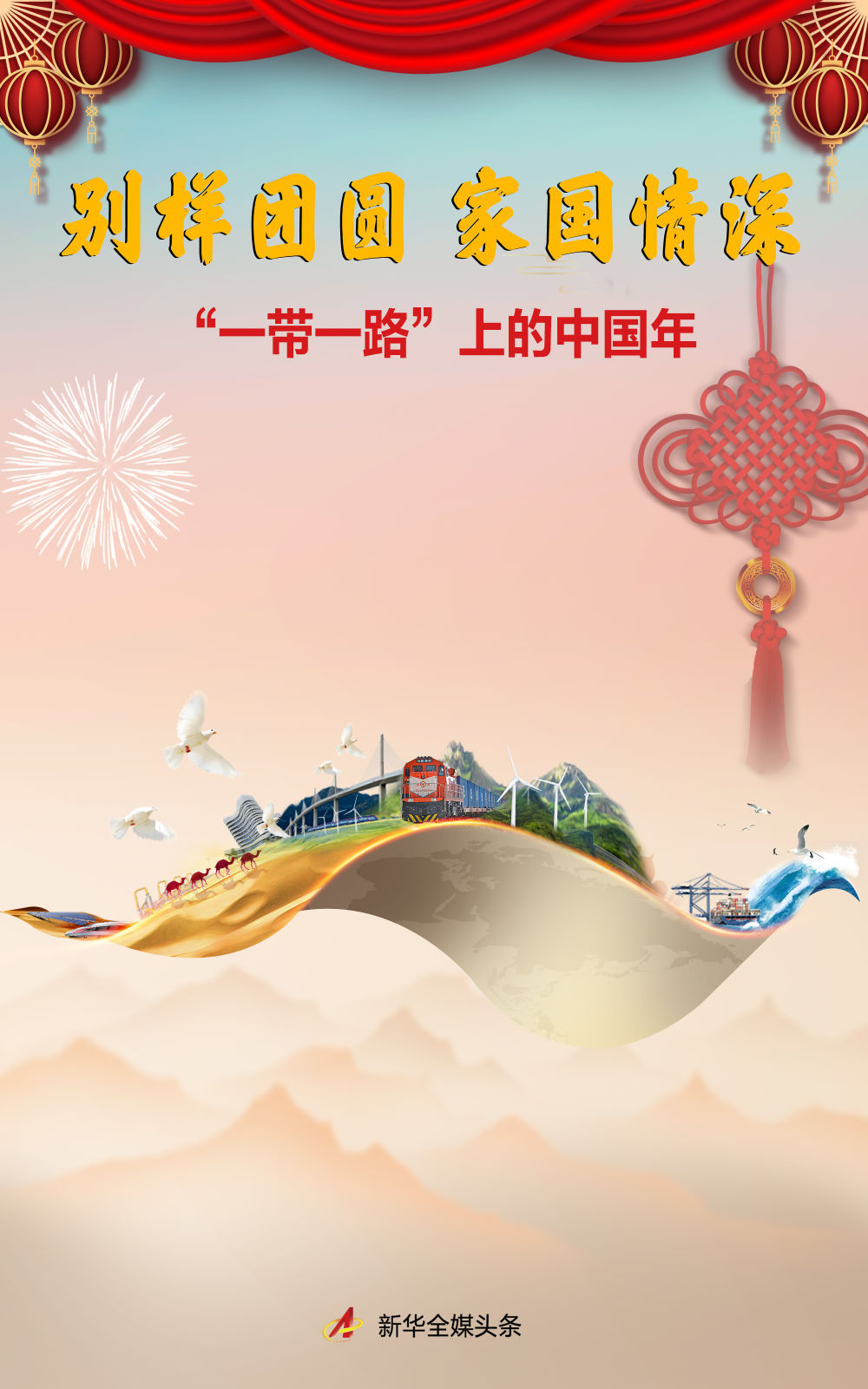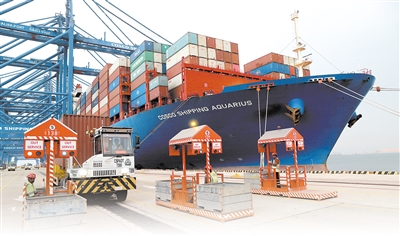Experts On High-quality Energy Development Talks About 丨The "Belt And Road" Energy Cooperation Injects Strong Impetus Into Global Green Energy Transformation
Experts On High-quality Energy Development Talks About 丨The "Belt And Road" Energy Cooperation Injects Strong Impetus Into Global Green Energy Transformation
The "Belt and Road" energy cooperation injects strong momentum into global green energy transformation Hu Ming, Secretary of the Party Committee of the General Institute of Electric Power Planning and Design, has become a general consensus and concerted action in the world. The 14th Five-Year Plan period
The "Belt and Road" energy cooperation injects strong impetus into the global green energy transformation
Hu Ming, Party Secretary of the General Institute of Electric Power Planning and Design
At present, the transformation of green and low-carbon energy has become a universal consensus and concerted action around the world. During the 14th Five-Year Plan period, the "Belt and Road" energy cooperation has extended from traditional energy development to green and low-carbon transformation, and has accelerated its entry into a new stage of high-quality development to build a new model of green and low-carbon transformation and win-win for energy. Under the joint guidance of General Secretary Xi Jinping’s initiative to jointly build the “Belt and Road” and the concept of building a community with a shared future for mankind, China adheres to the concept of openness, greenness and integrity, aims to high standards, benefit people’s livelihood and sustainability, leads global green development with practical actions, firmly fulfills the “dual carbon” commitment, and contributes China’s strength to promote the green and low-carbon transformation of energy in countries with joint construction of the “Belt and Road” and the reshaping of the global energy pattern of the global energy pattern.
01
Complete the "14th Five-Year Plan" with high quality and build a new pattern of open and win-win energy international cooperation
During the 14th Five-Year Plan period, China has always insisted on consultation, joint construction and sharing, strengthened international cooperation in green energy in all aspects, continuously improved global energy governance capabilities, achieved larger scope, wider areas and deeper energy cooperation, laid a solid foundation for ensuring energy security under open conditions, and completed the goals and tasks of building a new pattern of open and win-win energy cooperation in the 14th Five-Year Plan with high quality.
(1) Discuss the new concept of green energy cooperation. China advocated the establishment of the "Belt and Road" energy cooperation partnership, anchored the theme of pragmatic cooperation and green development, widely built multilateral consensus, and jointly studied and formulated important documents such as the "Belt and Road" Energy Cooperation Principles and Practical Actions", "Belt and Road" Energy Cooperation Charter", "Belt and Road" Green Energy Cooperation Qingdao Initiative", "Belt and Road" Green Energy Cooperation Action Plan (2024-2029)", especially the "Belt and Road" Green Energy Cooperation Action Plan (2024-2029)", which clearly put forward specific quantitative indicators for 11 key tasks in 7 aspects, providing a scientific, clear and operational practical path for green energy cooperation in the "Belt and Road".
(2) Let’s jointly seek a new picture of green energy cooperation. China adheres to the cooperation idea of "tailoring and adapting to local conditions", leverages its comprehensive advantages in energy planning, technology research and development, equipment manufacturing, industrial chain supporting, etc., and provides scientific, reasonable, feasible, and multi-in-one energy transformation solutions for the joint construction of the country. Assist countries such as Laos, Malaysia, Mongolia, South Africa, Indonesia, Uzbekistan and other countries in researching energy development plans, and coordinate the entire chain to empower green energy transformation in countries along the route. During the implementation process, respect and support the co-construction of the country to independently choose the energy development path, effectively absorb and transform China's experience, form a practical path that conforms to the country's resource endowment and development reality, significantly improve the adaptability and implementation effect of cooperation plans, and achieve good demonstration effects.
(III) Co-build a new platform for green energy cooperation. China adheres to true multilateralism, actively participates in the reform of the global energy governance system, and continuously enriches and innovates global energy governance tools. While actively building the home diplomatic platform for the "Belt and Road" energy partnership, an International Energy Change Forum was held to promote the establishment of a global clean energy partnership. Actively play the role of six major regional energy cooperation platforms including China-ASEAN, China-Arsenal and Arab League, China-Africa, China-Central and Eastern Europe, China-Central Asia and APEC Sustainable Energy Center, strengthen cooperation and South-South cooperation in emerging economies in the field of renewable energy, and continuously deepen regional energy cooperation. Deeply participate in important multilateral mechanisms in the energy field such as the United Nations, G20, APEC, IEA, IRENA, ASEAN, SCO, BRICS, etc., actively put forward China's initiatives, lead in influencing the formulation of rules, and promote the construction of a fair, just, balanced and inclusive global energy governance system.
(IV) Share new achievements in green energy cooperation. China actively implements General Secretary Xi Jinping’s important instructions to “make development achievements more and more equitably benefit people of all countries”, and through a series of down-to-earth and gathering people’s livelihood projects, it transforms the dividends of energy green development into a well-being within reach of the people of the country and practices the concept of a community with a shared future for mankind through practical actions. A large number of green energy cooperation projects such as the Philippines' "Bright Countryside" public welfare project, Afghanistan's Mazarri Sharif distribution network project, and Kiribati's "Photovoltaic Direct Drinking Water" smart energy project have been implemented, helping the host countries solve the problem of energy poverty, enhancing the economic vitality of countries along the route, and meeting the people's yearning for a better life for a joint construction of the country.
02
Accumulate practical experience in green energy cooperation and create a new paradigm for global energy cooperation
The initiative to jointly build the "Belt and Road" has become a popular international public product and international cooperation platform in the world today. During the 14th Five-Year Plan period, the "Belt and Road" energy green cooperation is based on the eight action plans for high-quality joint construction of the "Belt and Road" proposed by General Secretary Xi Jinping as the fundamental guideline. Under the guidance and guidance of the top-level design of the Party Central Committee, it continues to deepen cooperation in green energy and other fields, practices the spirit of the General Secretary's important speech with practical actions, and gradually forms an effective path of "based on security, transformation-oriented, market-driven, people's livelihood as the goal, and rules as the support", providing Chinese experience and Chinese solutions for promoting the green development of the co-construction of the country.
(1) Ensure energy security and build a green energy resilience barrier together. China has always regarded ensuring energy security as the fundamental prerequisite for green energy cooperation on the Belt and Road Initiative. On the one hand, China has comprehensively strengthened "hard connectivity" with key energy resource countries, established five major oil and gas cooperation zones in Central Asia-Russia, the Middle East, Africa, the Americas, and the Asia-Pacific region, and operated stably in the four major oil and gas import channels of Northeast, Northwest, Southwest and offshore, deepened power interconnection and cooperation with neighboring countries, and built a diversified, stable and reliable energy supply system to effectively improve the resilience of the energy system of the jointly built countries in a complex international environment. On the other hand, China attaches great importance to the prevention of energy cooperation risks, guides enterprises to enhance their awareness of overseas investment risks, improve risk prevention and control mechanisms, safeguard the smooth progress of energy cooperation projects, and consolidates the security foundation of green energy cooperation on the "Belt and Road".
(2) Promote transformation and development and drive energy structure optimization with the concept of green development. China has always integrated the concept of green and low-carbon development into the entire process of green energy cooperation on the "Belt and Road". In 2021, General Secretary Xi Jinping announced that China will no longer build new overseas coal-fired power projects and will vigorously support the green and low-carbon energy development of developing countries. China has carried out green energy project cooperation with more than 100 countries and regions, and has signed cooperation agreements in the field of renewable energy with Kuwait, Algeria, Kazakhstan and other countries. During the 14th Five-Year Plan period, China's direct investment in countries jointly building the "Belt and Road" exceeded US$160 billion, of which the scale of green energy investment has exceeded that of traditional energy. The landmark cooperation projects such as the Kalot Hydropower Station Project in Pakistan and the Chilata Floating Photovoltaic Project in Indonesia have been completed and put into production, significantly improving the clean energy supply capacity of the country and meeting the urgent needs of local energy green transformation. At the same time, China has built a green industrial chain system with international competitive advantages, deepened cooperation with the joint construction of national green production capacity, contributed 80% of the photovoltaic modules and 70% of the wind power equipment to the world, and provided solid support for the transformation of green energy in the "Belt and Road".
(3) Release development momentum and activate the endogenous motivation for business entities to participate. China has always adhered to the principles of marketization and commercialization to promote green energy cooperation in the "Belt and Road". Relying on its comprehensive advantages in technology, management, talents, costs, etc., Chinese-funded energy enterprises have deeply participated in the joint construction of national green energy investment and development, engineering construction, equipment manufacturing, technical services and other links, and actively integrated into the global green energy industry chain and supply chain. At the same time, energy central enterprises and private enterprises are encouraged to work together to "go overseas" to organically integrate the "stability" of central enterprises with the "live" of private enterprises, which not only activates market vitality and gathers efforts to open up new space for global energy cooperation, but also avoids internal consumption caused by resource dispersion and builds a "1 1>2" cooperation ecosystem through complementary advantages. Promote Chinese energy companies to form a more stable "combination punch" in international competition, and through collaborative output of technology, standards and services, the "China solution" will release greater value in the "Belt and Road" green energy cooperation.
(IV) Share China's experience and focus on improving energy access and people's livelihood. In promoting green energy cooperation on the "Belt and Road", China has always adhered to the people-centered development concept, and regards improving people's livelihood and improving access to energy as an important focus of cooperation. In the process of practice, we will carry out differentiated and pragmatic green energy cooperation based on the actual needs of the host country and fully combine the national conditions of the host country, focus on the benefits of people's livelihood, and coordinate and balance landmark projects and "small but beautiful" people's livelihood projects. Through various forms of cooperation such as capacity building, technical assistance, personnel training, etc., China actively provides Chinese solutions and Chinese wisdom for co-construction countries to solve energy access problems, promote universal coverage of green energy in remote areas and weak links, and continuously enhance people's livelihood and well-being of co-construction countries.
(5) Adhere to openness and inclusiveness, and promote co-construction of rules and reform of governance mechanisms. In the joint construction of the "Belt and Road" green energy cooperation, China has always been committed to creating a new governance pattern of cooperation, consultation on rules, and sharing of results. On the one hand, we will continue to promote the "soft connectivity" of rules and standards, continuously deepen cooperation with the co-construction country in policy docking, standard coordination, market access, etc., and continue to promote institutional coordination and mechanism interconnection in green energy planning, regulatory policies, project management and other fields. On the other hand, we will actively build a "2 6 N" energy international cooperation mechanism with Chinese characteristics, that is, to build and operate the two major energy home diplomatic platforms of the "Belt and Road" Energy Partnership and the Global Clean Energy Partnership, give full play to the role of six regional energy cooperation platforms such as China-Australia League, China-ASEAN, China-Central and Eastern Europe, China-SCO and APEC Sustainable Energy Center, deeply participate in energy cooperation under multilateral frameworks such as the United Nations, G20, and BRICS countries, and deeply participate in international energy governance reform through normalized, multi-level and multi-channel communication and dialogue, promote the construction of a more fair, reasonable, and win-win global energy governance system, and continuously expand the breadth and depth of green energy cooperation.
03
Welcoming the future of green development together and promoting the new journey of jointly building the "Belt and Road" countries toward green transformation
(1) Lead by the state to build a new pattern of top-level design of green energy cooperation and international governance. Top-level planning and design are an important prerequisite for promoting the steady and long-term development of green energy cooperation on the "Belt and Road". We need to coordinate the domestic and international situations and take into account the two major issues of development and security. First, strengthen international cooperation in clean energy, base itself on the energy endowment and development stages of different regions and countries, assist countries along the route to carry out systematic research and planning in the energy field, and promote full-chain cooperation in green energy in various links such as technology, products, services and standard systems. The second is to deepen the docking of energy technology equipment with rules and standards, focus on key directions such as advanced nuclear energy, smart grid, hydrogen energy, and energy storage, promote joint research and development, technical exchanges and talent training for enterprises and scientific research institutions, and support countries along the route to achieve connection and cooperation at the institutional levels such as green certificate system, renewable energy electricity price mechanism, and power market rules. The third is to operate the "Belt and Road" energy partnership with high quality to improve the level of institutionalized cooperation. Continue to organize the "Belt and Road" Energy Ministers' Meeting and related activities, promote the issuance of high-quality energy cooperation initiatives, rely on the professional advantages of the cooperation network and working groups, deepen policy communication, technical exchanges, financial communications, think tank research, capacity building and project cooperation, and continuously enhance the sense of gain and participation of member countries.
(2) Focus on enterprises and create a new ecosystem of cooperation in the entire green energy industry chain. Enterprises are market entities and key forces in promoting green energy cooperation in the "Belt and Road". Looking to the future, first, we will plan an international development strategy forward-looking, focus on key directions such as personalized energy services, AI, new energy project construction and grid-connected operation and maintenance, and smart grid construction, and actively expand bilateral, multilateral and third-party market cooperation, and promote the implementation of "China Solution", "China Standards" and "Made in China" in more co-construction countries. Second, we will adhere to the concept of "win-win cooperation", give full play to the backbone of energy central enterprises and the flexible and efficient operation advantages of private enterprises, and work with upstream and downstream enterprises in the industrial chain to form a "joint fleet" to promote information exchange, resource sharing, and complementary advantages, and avoid disorderly competition. Third, we will adhere to the localization of enterprises, adhere to the concept of "going out, going in, and more importantly", accelerate the layout of local R&D centers, production and manufacturing bases and local operation teams, improve the local partner system, and promote in-depth integration with the host government and enterprises.
(3) Empower think tanks to promote policy communication and people-to-people communication. High-level think tanks are an important supporting bridge and communication link for promoting green energy cooperation in the "Belt and Road". At the think tank level, we should continue to improve our external research and public diplomacy capabilities. First, we should carry out strategic, forward-looking and reserve research on major issues of energy cooperation in the "Belt and Road" and actively provide intellectual support for host governments in terms of energy planning, policy connection and mechanism design, and promote the precise docking of think tank results from the "supply side" and the "demand side". Second, we will actively carry out international exchanges and capacity building activities, rely on multilateral platforms and cooperation mechanisms, actively carry out multi-level and multi-form policy communication activities and professional training, cultivate a team of green energy transformation talents with a global vision and local practical experience, and improve the energy governance capabilities of countries along the route. The third is to tell China's green energy story well. Relying on various channels such as international conferences, think tank reports, media platforms, etc., systematically explain China's energy policies, green development concepts and transformation practices, enhance the international community's awareness and recognition of China's green development, enhance the support of jointly building countries for the green "Belt and Road" and create a more friendly and rational international public opinion environment. (Co-produced by Zhongneng Media Xinhuanet, Comprehensive Department of the National Energy Administration)





